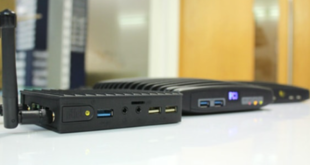When audio content is clear of background noise, audiences are more engaged. This builds trust with listeners and increases advocacy.
Recording in a quiet space is the best way to reduce background noise. However, this isn’t always possible. Luckily, there are software programs that can remove noise from audio.
Filtering
Removing background noise from audio files requires much skill and experience. Professionals can access complex audio restoration software and plugins to clean up sound quickly and effectively. They also have the skills, patience, and in-depth knowledge necessary to listen to and evaluate each second of an audio file.
One of the most important techniques in removing background noise from audio is masking. This process involves the wanted audio being louder than the unwanted background sound in a specific range of frequencies. It is often hard to achieve this, especially when a noise covers a wide range of frequencies or has a long duration. For example, suppose your recording contains high-pitched hiss in the upper frequencies. In that case, you might not be able to remove this with a simple low pass filter because it could affect the audio from the cymbals being played by a percussionist.
In this case, you would need to use a notch filter that reduces the frequencies of a particular noise in a narrow band of the frequency spectrum. A professional will know which type of filter to use and where to position it on the frequency spectrum to eliminate the hum or hiss without affecting the audio from other parts of the file.
Equalization
There are some background noise remover software that the average person can use to reduce background noise from their audio. But these are generally limited tools that often do more harm than good. Leaving this task to an expert with the right software and experience is the best way to ensure that your sound quality will be top-notch.
One of the most common tasks professional audio engineers perform is using an equalizer to reduce or eliminate a specific frequency range. This is called subtractive EQ. When done properly, adding more headroom can make your music sound louder. Another use of EQ is to correct frequency masking, which occurs when instruments with overlapping frequencies can’t be clearly heard over each other. For example, a kick drum can mask the high frequencies in an acoustic guitar.
Choosing the right settings for an equalizer is crucial for successful noise removal. For instance, if you’re trying to remove the power-line hum, it’s important to know that you don’t want to cut too much out of the range — this can cause the voice to sound muffled and less natural.
There are also ways to add sounds to the mix with EQ, such as boosting certain frequencies to give your track more character. For example, this is a great technique to use to give your song more of a party atmosphere.
Noise Reduction
Noise reduction uses a similar process to equalization but is more targeted toward specific frequencies. It identifies the noise characteristics and then seeks out other audio waves or frequencies with the same characteristic. This then reduces the level of the unwanted noise without lowering the levels of the desired audio.
This is a powerful technique, but it is best left to professionals. It requires knowledge, patience, and an in-depth understanding of wave artifacts. Many free or cheap programs claim to remove background noise from audio or video clips, but you must understand the limitations of these tools before using them. They often do more harm than good and can severely affect the quality of your final audio or video.
The most effective way to fix noisy audio is to prevent it from happening in the first place. This means recording in the quietest environment possible. This is especially important for forensic or recollections recordings, which must be accurate and clear to be useful.
Mechanical sounds like fans, heating or air conditioning systems, and power lines are common sources of background noise that can ruin a recording. While these are often unavoidable, they can be minimized by using a quiet room when recording and turning off equipment when not in use.
Compression
Compression is one of the most important tools for mastering your music. It reduces the dynamic range of your audio, meaning that the loudest peaks will be limited in volume, and the softer parts will be more consistent. It’s great for evening out vocal takes, getting thick & solid bass, & is essential to making drums pop through the mix.
When used incorrectly, however, it can destroy the audio’s dynamics & make it sound flat & dull. To use it effectively, the engineer needs to know what the track is trying to achieve & how the compressor will affect it. It also requires a keen ear to hear when compression is working & not over-compressing it.
A compressor can have many different settings, which vary the type of compression it does (fast attack, slow release, etc.) & how transparent or warm your audio will sound. A good engineer will experiment with these settings & listen to their effect on the overall audio to determine what setting will work best for your recording.
 Time News Global Business, Technology, Entrepreneurship News
Time News Global Business, Technology, Entrepreneurship News




